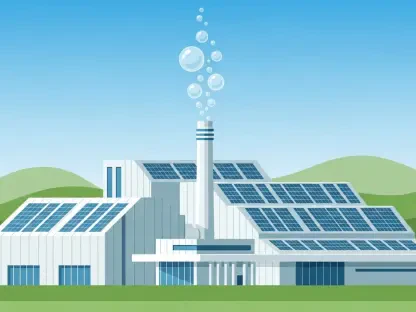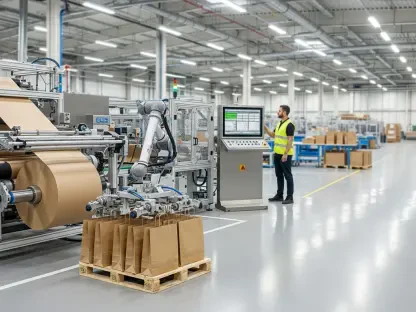In a landscape where the global chemical industry grapples with persistent economic headwinds, LANXESS, a leading specialty chemicals company, finds itself navigating a particularly turbulent period during the second quarter of the current year, with demand weakening across key markets and external pressures mounting. The company has reported significant declines in financial performance, prompting a series of strategic maneuvers to weather the storm. This downturn is not isolated but reflects broader challenges within the sector, driven by reduced sales volumes and complex geopolitical factors such as ongoing tariff discussions with the U.S. These conditions have pushed LANXESS to reassess its operational and financial strategies, focusing on cost efficiency and portfolio optimization. As the industry faces an uncertain outlook with no immediate recovery in sight, the company’s response offers a window into how industrial players are adapting to sustain profitability and prepare for future growth amid adversity.
Financial Performance and Market Challenges
Q2 Earnings Decline and Economic Pressures
The second quarter has proven to be a challenging period for LANXESS, with financial results reflecting the broader economic slowdown impacting the chemical sector. EBITDA pre exceptionals dropped by 17.1% to EUR 150 million compared to EUR 181 million in the corresponding quarter of the prior year, while sales saw a substantial decline of 12.6%, falling to EUR 1.466 billion from EUR 1.678 billion. This downturn was largely driven by lower demand and diminished sales volumes across all business segments. Additionally, the divestiture of the Urethane Systems business unit to UBE Corporation earlier this year further contributed to the earnings drop, as its contributions are no longer included in the quarterly figures. The EBITDA margin pre exceptionals also slipped slightly to 10.2% from 10.8%, underscoring the strain of a faltering global market. CEO Matthias Zachert highlighted the worsening economic conditions and heightened market uncertainty, particularly citing tariff-related tensions with the U.S. as a significant burden on the European chemical industry.
Impact of Divestitures and Market Uncertainty
Beyond the immediate financial metrics, LANXESS’ performance in the recent quarter reveals deeper structural shifts within the company and the industry at large. The sale of the Urethane Systems unit marks the completion of a strategic pivot toward specialty chemicals, effectively divesting the last of its polymer businesses. This move, while aligning with long-term goals, has temporarily weighed on earnings as the company transitions its portfolio. Meanwhile, external uncertainties continue to loom large, with no clear timeline for economic recovery. The ongoing tariff discussions with the U.S. have created additional hurdles for European chemical companies, disrupting supply chains and market planning. This environment of uncertainty has forced LANXESS to adopt a cautious stance, prioritizing operational resilience over aggressive expansion. The focus remains on navigating these geopolitical and economic challenges while maintaining a competitive edge in a contracting market, with strategic decisions aimed at mitigating risks and preserving financial stability.
Strategic Responses and Future Outlook
Cost Reduction and Operational Adjustments
In response to the sustained weak demand projected for the remainder of the current year, LANXESS has implemented a series of cost-cutting and operational efficiency measures to bolster its financial standing. The company accelerated the closure of its hexane oxidation facility in Krefeld-Uerdingen, Germany, finalizing the shutdown by the end of the second quarter. Plans are also in place to close the aroma chemicals production site in Widnes, UK, by next year, citing high operational costs that render the facility uncompetitive. Additionally, efficiency enhancements are underway at the bromine production site in El Dorado, U.S., as part of a broader effort to streamline operations. These initiatives are expected to generate annual savings of EUR 50 million by the end of the period spanning from now to 2027. Such decisive actions reflect a proactive approach to addressing immediate financial pressures while restructuring the production network to align with current market realities and future demand expectations.
Revised Forecasts and Financial Prudence
Alongside operational adjustments, LANXESS has revised its full-year EBITDA pre exceptionals guidance downward to a range of EUR 520 million to EUR 580 million, compared to the previous estimate of EUR 600 million to EUR 650 million. This adjustment accounts for an additional EUR 10 million burden stemming from supply restrictions imposed by a chlorine supplier, highlighting the multifaceted challenges the company faces. Despite these setbacks, positive strides have been made in financial management, with free cash flow reaching EUR 31 million in the second quarter. Net financial debt was also reduced by 18%, dropping to EUR 2.069 billion from EUR 2.512 billion, aided by proceeds from the Urethane Systems sale, which facilitated the redemption of a EUR 500 million bond that matured earlier this year. These steps underscore a commitment to financial prudence, balancing immediate cost-saving needs with strategic investments to ensure long-term stability. Looking ahead, the focus on debt reduction and portfolio optimization positions LANXESS to capitalize on eventual market recovery.
Preparing for Recovery with Strategic Focus
Reflecting on the events of the second quarter, LANXESS faced significant hurdles that mirrored the wider struggles within the chemical industry, driven by a faltering global economy and regional uncertainties. The revised earnings forecast and substantial debt reduction efforts highlighted a period of adaptation, as did the targeted closures and efficiency improvements across production sites. These measures were not merely reactive but formed part of a calculated strategy to navigate adversity with resilience. Moving forward, the emphasis must shift toward leveraging these operational recalibrations to build a stronger foundation for growth. Stakeholders should monitor how the company balances short-term cost efficiencies with investments in innovation and market positioning. As economic conditions evolve, the agility demonstrated in recent decisions will be crucial for LANXESS to seize emerging opportunities and reinforce its standing in the specialty chemicals arena when demand rebounds.









